Table of Contents
Arteries play a vital role in transporting oxygen and nutrient-rich blood from the heart to the entire body, which is crucial for the proper functioning of organs and tissues. However, when arteries are blocked, as in the case of arteriosclerosis, blood flow is compromised, leading to problems such as heart attacks, strokes, and kidney failure.
So, how to reduce plaque in arteries? And is there any way to do vascular cleansing naturally?
Factors such as fast food consumption, stress, smoking, inadequate sleep, being overweight, and lack of physical exercise significantly increase the risk of developing arteriosclerosis. On the other hand, adopting a healthy lifestyle, including a balanced diet, regular exercise, smoking cessation, and other positive changes, can help to remove plaque buildup from the arteries naturally.
Keep reading to learn more about helpful information.
Remove plaque from arteries: Understanding atherosclerosis
Before discussing how to remove plaques from the arteries, we need to understand some basic concepts that will help us understand how our body works.
What is arterial plaque?
An arterial plaque is a buildup of substances, such as cholesterol, fats, and other elements, that is deposited on the inner walls of the arteries. These plaques can develop over time and hinder normal blood flow. The process of arterial plaques involves various cells of the immune system and the cardiovascular system.
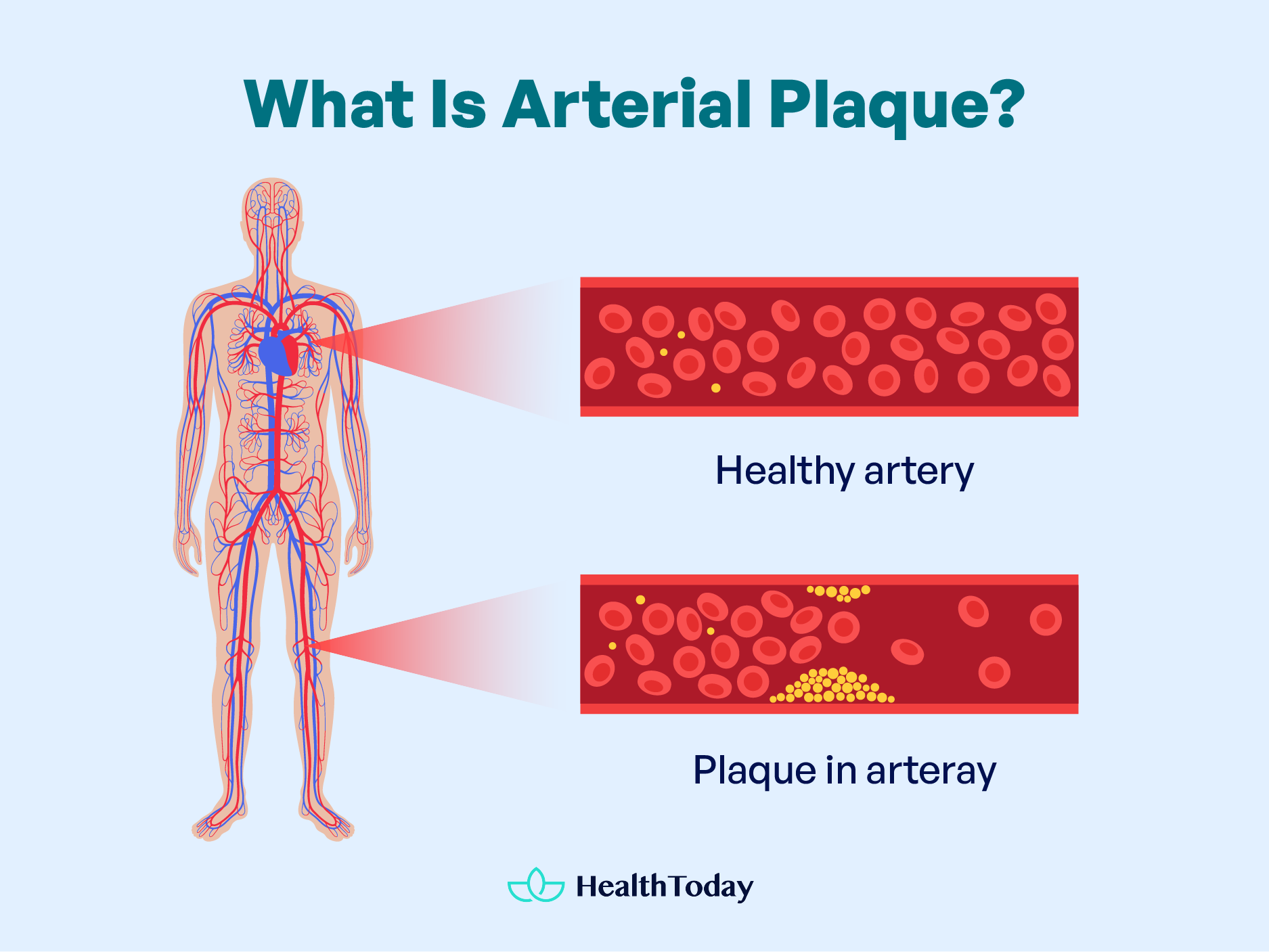
When the cells lining the arteries (called endothelial cells) are damaged, either by factors such as high blood pressure, smoking, or diabetes, an opportunity is created for cholesterol and other substances to accumulate in the injured area (1). This process triggers an inflammatory response in the body, leading to the formation of plaques in the artery walls.
As these plaques grow, they can become larger and stiffer, reducing the space for blood to flow freely. In some cases, plaques can rupture or break off, causing blood clots to form that can further clog arteries. When blood flow is significantly compromised, the risk of serious cardiovascular events, such as heart attacks or strokes, increases.
Complications
Some complications are (2):
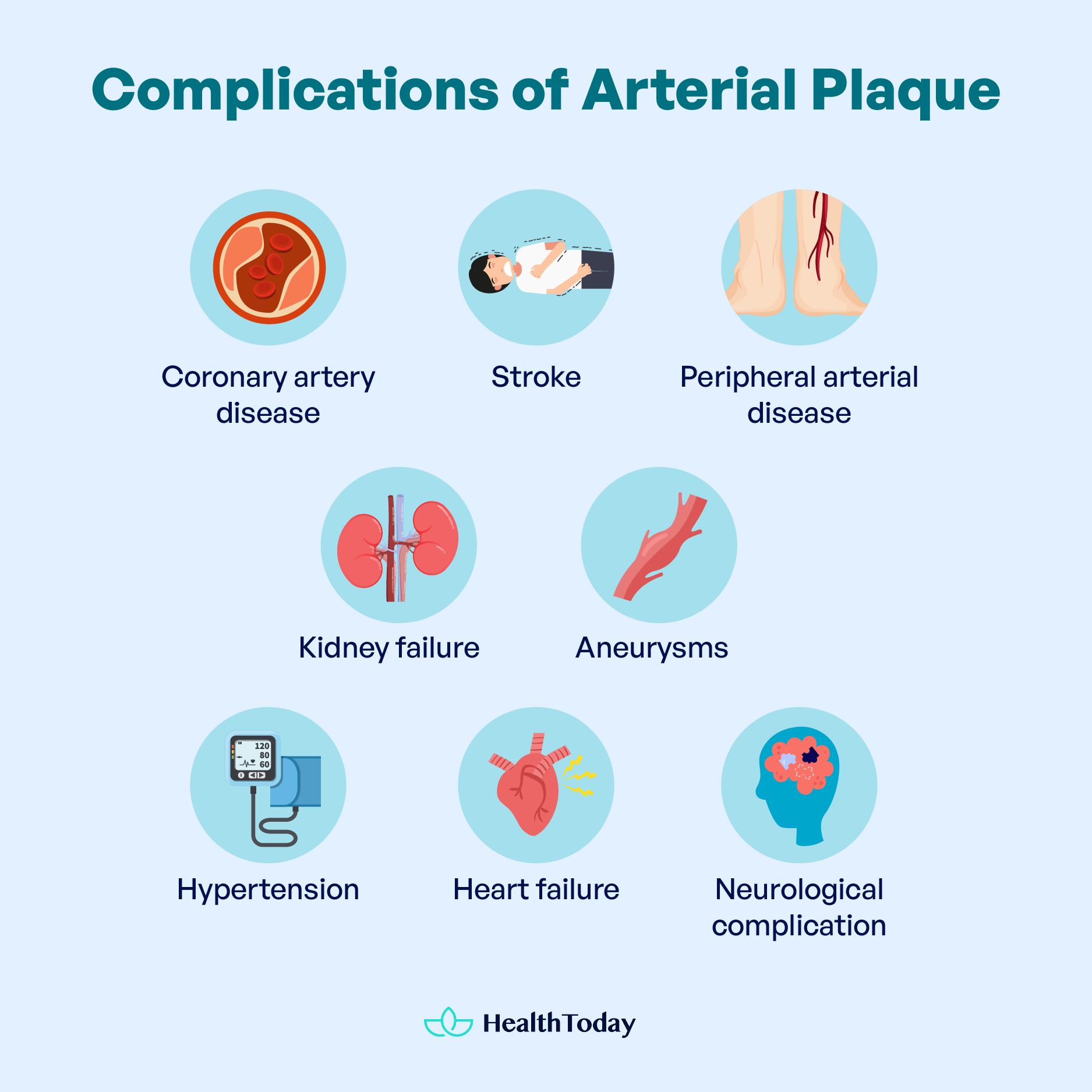
- Coronary artery disease: Atherosclerosis in the coronary arteries can lead to coronary artery disease, often manifesting as angina pectoris (manifests as pain in the chest with exercise or increased heart rate) or, in more severe cases, myocardial infarction (also known as heart attack).
- Stroke: When the arteries that supply blood to the brain are affected, a stroke can occur. Interruption of blood flow to the brain can cause early brain damage and affect neurological functions depending on the area involved.
- Peripheral arterial disease: Blockages in the arteries supplying the extremities can lead to peripheral arterial disease. This can cause leg pain during physical activity and increase the risk of infections and scarring problems.
- Kidney failure: Reduced blood flow to the kidneys due to atherosclerosis can contribute to the development of kidney failure.
- Aneurysms: Atherosclerosis can weaken arterial walls, resulting in the formation of aneurysms. These are abnormal sacs or dilations in the arteries that can rupture and cause life-threatening internal bleeding.
- Hypertension: Blockages can contribute to elevated blood pressure, increasing the risk of cardiovascular complications.
- Heart failure: In addition to coronary heart disease, atherosclerosis can contribute to heart failure and other cardiac disorders by affecting the blood supply to the heart muscle.
- Neurological complications: In addition to stroke, atherosclerosis can also contribute to vascular dementia, a condition in which the blood supply to the brain is compromised, affecting cognitive function.
It is essential to understand atherosclerosis and its risk factors to take preventive measures. Adopting a healthy lifestyle, including a balanced diet, regular exercise, blood pressure control, and smoking cessation, can help prevent or minimize the complications of this disease.
How to reverse clogged arteries naturally?
The consequences of arterial plaque go beyond physical obstruction. Plaque buildup can lead to inflammation, further complicating artery health. If left untreated, this inflammatory response can contribute to plaque destabilization, increasing the risk of blood clots and serious cardiovascular events. Here are some tips to help you remove plaque from arteries naturally.
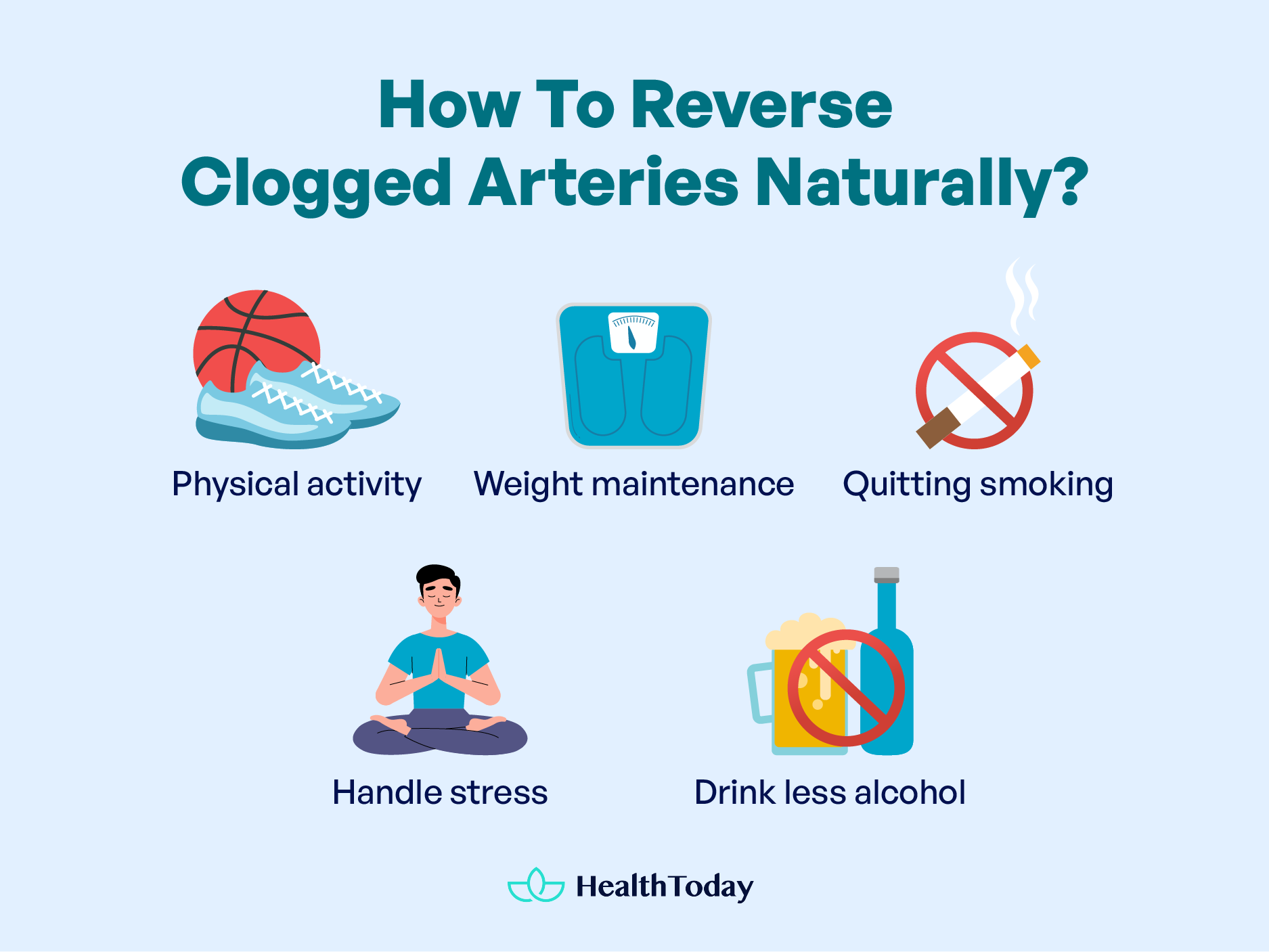
Physical activity: move more, live better
Reducing plaque in arteries naturally requires one fundamental activity: exercise.
Aim for at least 150-300 minutes per week of moderate-intensity physical activity, gradually increasing your endurance. According to the Centers for Disease Control and Prevention (CDC), it is beneficial to include muscle-strengthening activities targeting all muscle groups at least twice a week (3).
American guidelines recommend some of these (4):
- 150 minutes (2 hours and 30 minutes) to 300 minutes (5 hours) per week of moderate-intensity aerobic physical activity, for example, brisk walking.
- 75 minutes (1 hour and 15 minutes) to 150 minutes (2 hours and 30 minutes) per week of vigorous-intensity aerobic physical activity. These activities can be running or swimming.
- A combination of moderate- and vigorous-intensity activities.
In addition, adults should strive to move more and sit less throughout the day. The general principle is little physical activity is better than none.
Weight maintenance: Getting the balance right
Having a healthy weight is not merely a matter of aesthetics but is fundamentally interrelated with cardiovascular wellness. Combining a heart-healthy eating plan and consistent physical activity is a key to natural weight management.
A key component of weight maintenance is following a heart-healthy eating plan. A diet rich in nutrient-rich foods such as fruits, vegetables, whole grains, and lean proteins is proven to prevent cardiovascular diseases such as atherosclerosis, acute myocardial infarction, and stroke (5).
Reducing consumption of saturated and trans fats, as well as processed sugars, further contributes to the goal of weight control and thus cleansing the arteries naturally.
For overweight or obese individuals, losing weight positively influences lipid profiles, contributing to a decrease in bad cholesterol (LDL) and an increase in good cholesterol (HDL) (6). This contributes to reducing arterial plaques. This is thanks to the fact that HDL cholesterol is responsible for eliminating bad cholesterol (LDL), a component of arterial plaques.
Having a comprehensive weight loss plan and physical activity contributes positively to reducing clogged arteries and, consequently, reduces the risks of these heart diseases.
Quitting smoking to cleanse your arteries
Smoking is considered one of the main risk factors in the development of atherosclerosis and cardiovascular diseases. Smokers are associated with a 50% increase in the progression of arteriosclerosis compared to non-smokers (7). This is due to the release of free radicals by tobacco, which damage and inflame arterial walls, promoting the formation of plaques in the arteries.
In addition, smoking contributes to the decrease in good cholesterol (HDL) and the increase in bad cholesterol (LDL), thus accelerating the plaque formation process. Quitting smoking is a fundamental recommendation, accompanied by weight loss, regular physical activity, and a healthy diet.
Some specific programs (8) and medications can facilitate the process of quitting smoking. For more detailed information, it is advisable to consult with a doctor and explore available options.
Handle stress
Chronic stress plays a significant role in the development and progression of plaque formation in arteries, a central process in cardiovascular disease. The mechanisms by which stress contributes to plaque formation have been studied (9):
- Chronic inflammation: Prolonged exposure to chronic stress triggers a systemic inflammatory response. Inflammation contributes to arterial wall damage, creating an environment conducive to plaque formation.
- Dysregulation of the immune system: Stress can dysregulate the immune system, causing immune cells to accumulate in injured arteries, thereby promoting the development of atherosclerotic plaques.
- Bad habits: In addition, stress is often associated with harmful behaviors such as poor diet, lack of exercise, and smoking, all factors that contribute to plaque formation.
To manage stress well, you can try various techniques, such as yoga, meditation, and deep breathing exercises. In addition, regular physical exercise releases endorphins, improving mood and reducing the stress response.
Maintaining strong social connections and seeking emotional support is effective in coping with stress, thus promoting mental and arterial health. Finally, adopting a healthy lifestyle, with adequate sleep and avoiding harmful habits, regulates stress and promotes cleaner arteries.
Drink less alcohol
Consuming large amounts of alcohol is harmful to your health, as it increases the risk of cardiovascular diseases such as hypertension, arrhythmias, and cardiomyopathy, and liver diseases such as hepatitis and cirrhosis, among others. But if you consume alcohol, it is advisable to consume it in moderation. That means no more than one to two drinks per day for men and one drink per day for women (10).
Red wine has been studied for its potential benefits in preventing arteriosclerosis (11). Thus, moderate consumption of red wine may offer advantages for cardiovascular health. It contains polyphenols and antioxidants, such as resveratrol, which reduce the oxidation of LDL particles, decreasing the amount of bad cholesterol.
In addition, red wine shows anti-inflammatory effects, can increase levels of good cholesterol (HDL), and improve endothelial function, thus contributing to the health of blood vessels. These factors contribute to cleaning your arteries naturally (12).
It is important to note that these benefits are linked to moderate consumption. However, you should seek professional advice and consider your drinking habits.
In summary, to reverse arterial plaque naturally, you should adopt a heart-healthy lifestyle. Prioritize physical activity by getting at least 150-300 minutes of moderate weekly exercise. Maintain a healthy weight by following a balanced diet rich in fruits, vegetables, and lean proteins.
Stop smoking, as it is a risk factor for arterial plaque formation. Manage chronic stress with techniques such as yoga and meditation. Limit alcohol consumption. If you drink, prioritize drinking red wine in moderation. Always consult healthcare professionals for more information on the lifestyle changes that are best for you.
7-day meal plan to strengthen heart health
Maintaining a healthy diet and lifestyle will help you defend against heart disease. Many studies emphasize the significant impact of incorporating heart-healthy foods, regular exercise, maintaining a healthy weight, abstaining from smoking, limiting alcohol intake, and ensuring sufficient sleep in reducing cardiovascular disease-related deaths (13).
This meal plan prioritizes heart-healthy foods such as fiber-rich fruits, vegetables, whole grains, lean proteins, and beneficial fats like olive and avocado oil. It restricts saturated fats, added sugars, and sodium, which affect the heart when consumed excessively adversely. Here, we offer recipes that enhance flavor with various herbs and spices.
By adhering to this simple 1,200-calorie meal plan, you not only safeguard your heart but also promote a steady and healthy weight loss. The meals prepared from this plan offer a convenient and nutritious option for the entire week.
Download the 7-day meal plan here (Pdf).
Day 1:
- Breakfast (300 calories): Oatmeal with sliced banana.
- Lunch (350 calories): Brown rice and black bean bowl with salsa. Go to Recipe.
- Snack (100 calories): Apple slices with a tablespoon of peanut butter.
- Dinner (450 calories): Roasted Sheet Pan Chicken, Sweet Potatoes, and Broccoli. Go to Recipe
Day 2:
- Breakfast (300 calories): Whole-grain toast with mashed avocado.
- Lunch (350 calories): Lentil soup with whole-grain crackers. Go to Recipe
- Snack (100 calories): Greek yogurt with a handful of blueberries.
- Dinner (450 calories): Stir-fried tofu with mixed vegetables and quinoa. Go to Recipe
Day 3:
- Breakfast (300 calories): Scrambled eggs with spinach and whole-grain toast.
- Lunch (350 calories): Whole-grain wrap with canned tuna, lettuce, and tomato. Go to Recipe.
- Snack (100 calories): Carrot sticks with hummus.
- Dinner (450 calories): Baked cod, brown rice, and sautéed zucchini. Go to Recipe.
Day 4:
- Breakfast (300 calories): Banana and spinach smoothie with milk.
- Lunch (350 calories): Chickpea salad with mixed veggies and a lemon-tahini dressing. Go to Recipe
- Snack (100 calories): A small pear.
- Dinner (450 calories): Grilled Chicken with Quinoa and Roasted Brussels Sprouts. Go to Recipe
Day 5:
- Breakfast (300 calories): Whole-grain pancakes with fresh strawberries.
- Lunch (350 calories): Brown rice stir-fry with flavored tofu and vegetables. Go to Recipe
- Snack (100 calories): Almonds (a small handful).
- Dinner (450 calories): Turkey meatballs, whole-grain pasta, and marinara sauce. Go to Recipe
Day 6:
- Breakfast (300 calories): Greek yogurt with granola and sliced peaches.
- Lunch (350 calories): Chicken Salad Pita. Go to Recipe
- Snack (100 calories): Orange slices.
- Dinner (450 calories): Lentil curry with brown rice. Go to Recipe
Day 7:
- Breakfast (300 calories): Whole-grain waffles with a topping of yogurt and mixed berries.
- Lunch (350 calories): Black bean and vegetable burrito bowl. Go to Recipe
- Snack (100 calories): Sliced cucumber with a light dressing.
- Dinner (450 calories): Grilled salmon in foil with sweet potato mash and green beans. Go to Recipe
This example of a 7-day healthy meal plan can serve as a guide to integrating nutritious habits that benefit both the heart and the body overall.
How to open blocked veins in the legs naturally?
Exercise regularly, eat healthy, avoid smoking, and stay hydrated.
Does exercise unclog arteries?
Regular exercise improves blood flow and promotes vascular health, reducing the risk of arterial plaque buildup.
Can turmeric unblock arteries?
Curcumin in turmeric may have anti-inflammatory properties, potentially aiding vascular health. However, the number of clinical studies conducted to date is limited.
What are the warning signs of clogged arteries?
Chest pain, shortness of breath, fatigue, rapid heartbeat, weakness, and pain or numbness in extremities.
Can you check for clogged arteries at home?
While certain symptoms may signal arterial issues, a definitive diagnosis requires medical evaluation. Home tests are not reliable; seek professional medical advice if concerned.
Summary
Now you know the answer to how to reduce plaque in arteries — the best way to unclog an artery is through prevention. From an early age, adopting habits such as a healthy diet, regular exercise, stress control, and avoiding smoking are essential to prevent arteriosclerosis and cardiovascular disease.
Once the blockage has occurred, leaving harmful habits behind is the best way to avoid complications and reduce them. If we manage to lead a healthy life, we can have a complication-free old age and enjoy all stages of life.








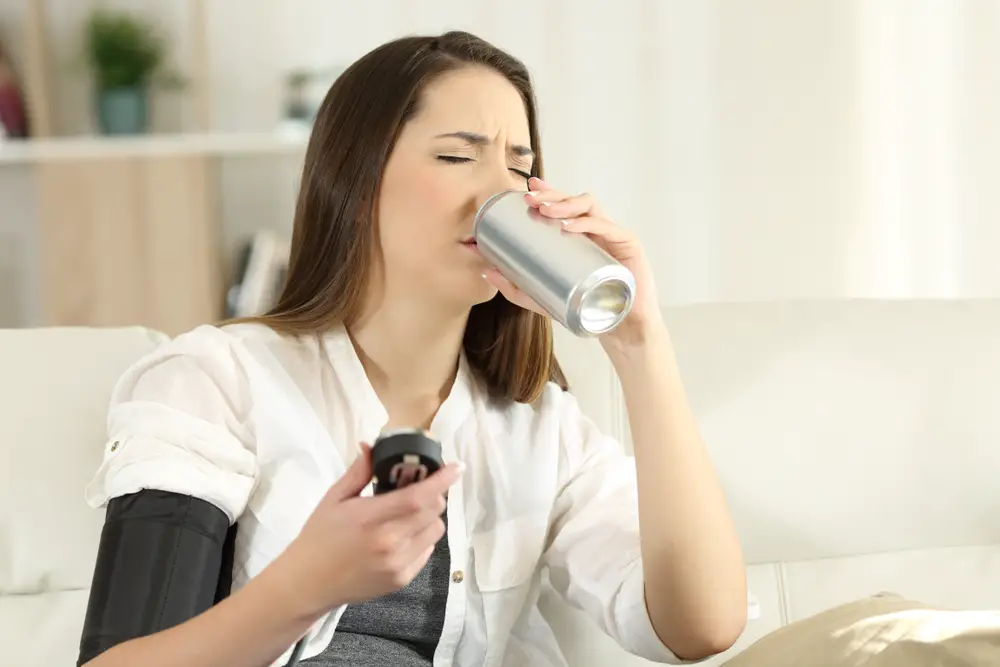


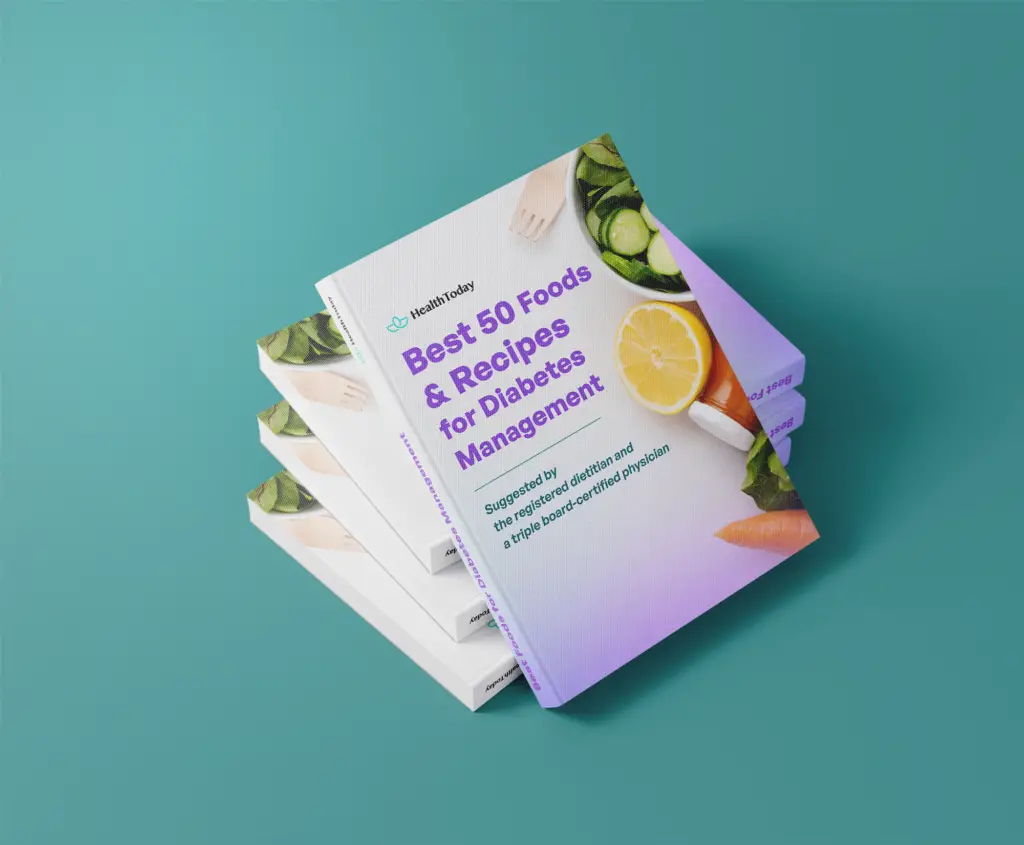



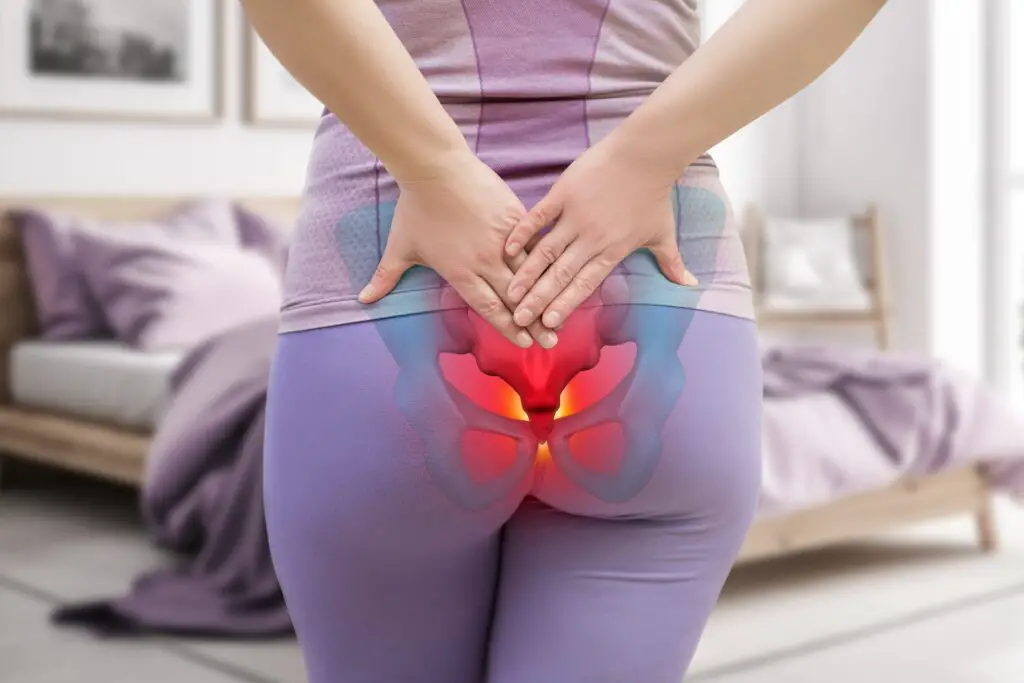
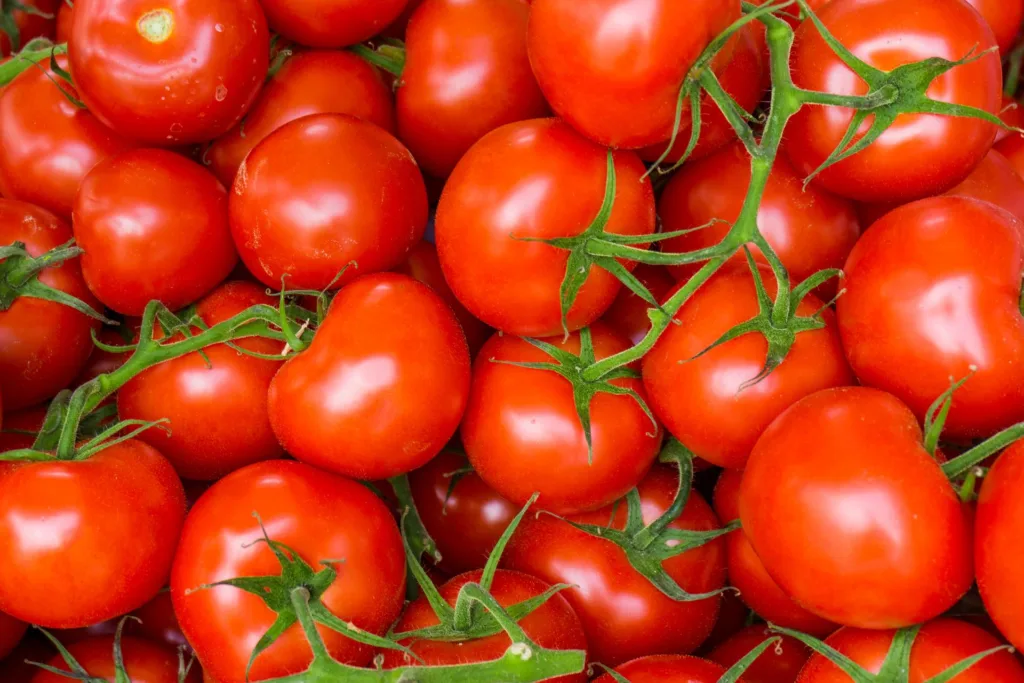
Comments
0